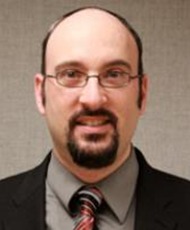 Dr. Dov Chelst manages the analyses of all public safety data for CPSM and is one of the first points of contact for each new client. He initiates the data collection process and directly oversees the team of data analysts. To date, Dov has managed over 140 data analysis projects for city and county agencies, ranging in population size from 8,000 to 800,000.
Dr. Dov Chelst manages the analyses of all public safety data for CPSM and is one of the first points of contact for each new client. He initiates the data collection process and directly oversees the team of data analysts. To date, Dov has managed over 140 data analysis projects for city and county agencies, ranging in population size from 8,000 to 800,000.
Previously, Dov had taught mathematics, physics, and statistics at the university-level for nearly a decade. Further, after conducting research in complex analysis, mathematical physics, and wireless communication networks, he had presented his academic research at various conferences and workshops across the country.
Where did you attend college and what did you study?
I attended Yeshiva University in New York City where I studied mathematics and physics. Then, I received a Ph.D. in mathematics from Rutgers University in New Brunswick, New Jersey.
How did you get involved in the public safety and local government professions?
I have been working in public safety and local government since I began my job at the International City/County Management Association (ICMA) in 2008. I started working part-time in January of that year and converted to full-time at the end of April. My other local government experience consisted of two summer jobs at the Oakland County (MI) Courthouse in the 1990s while in college.
How did you first come to work for CPSM?
It was really a word-of-mouth recommendation, followed by an interview in 2008 when the original CPSM was starting up at the ICMA.
How has CPSM grown over time?
In 2008, we began conducting data analysis using just Excel spreadsheets. Since then, we have incorporated the use of additional technologies such as Minitab, R, Python, SQL, Shiny, and ArcGIS. This has allowed us to increase the speed, accuracy, and sophistication of our current operations. We’re constantly evolving both to improve what we can offer our clients and to stay ahead of our competition.
What has been your favorite project?
We have conducted more than a hundred police and fire studies. I tend to either enjoy large projects that nevertheless run well or projects that challenge us to employ new technologies or forms of analysis.
In recent years, I have enjoyed partnering with the Tucson Police Department on a large project; I had the pleasure of interacting with a number of critical thinkers at the police department. Aside from that, I am also proud of the Workload, Staffing, and Schedule Design study that we conducted for Naperville PD in Illinois.
In your time with CPSM, what has been one of the biggest lessons you’ve learned?
I have learned numerous lessons over the years. The most important are:
- Data can be ugly and messy; collecting and processing it takes longer than the actual analysis.
- Analysis is useless unless it answers a specific business-related question.
- Someone is likely to be upset by our findings and handling these reactions is part of my job.
- Some police and fire departments operate in strikingly unusual ways. They’re often completely unaware of how atypical they are.
How do you want to help CPSM grow in the future?
While we’ve studied a few hundred departments in the past 10 years, there are roughly 40,000 police and fire departments in the county. While many are rather small, thousands could benefit from better data-driven decision making. I would like to find a way to help them with our current capabilities. As we expand our capabilities, I would like our potential customers to see how we truly differ from many of our competitors. Additionally, on a technical note, I’d like to study an agency that handles more than a million calls in a calendar year.
